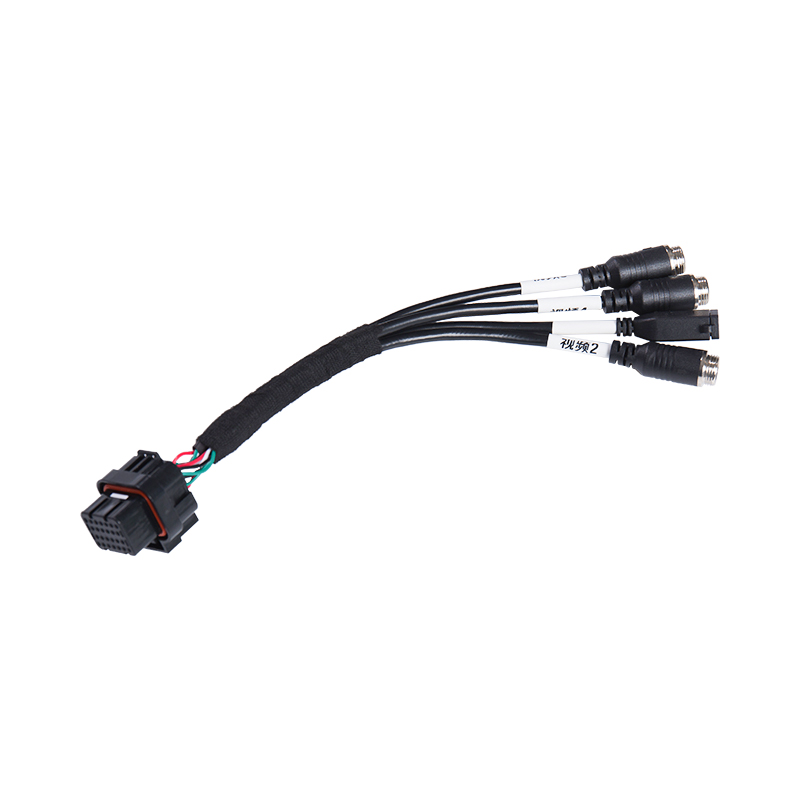-
CBB61 1.2uF/400V Black Film CapacitorsThe CBB61 1.2uF/400V capacitor features a black casing with black dielectric material, measuring 37mm × 24mm × 13mm. It includes mounting holes for se...
-
CBB61 1.5uF/400V CapacitorsThe CBB61 1.5uF/400V capacitor shares the 37mm × 24mm × 13mm black casing and black dielectric material with its 2.0uF counterpart. It also features m...
-
CBB61 2.0uF/400V CapacitorsThe CBB61 2.0uF/400V capacitor comes in a black casing with a black dielectric material, measuring 37mm × 24mm × 13mm. It includes mounting holes for ...
-
CL21 155/400V CapacitorsThe CL21 155/400V capacitor measures 22.5mm × 17.5mm × 10.3mm and is designed with a brown encapsulated casing, offering robust insulation and environ...
-
CL21 105/630V CapacitorsThe CL21 105/630V capacitor has dimensions of 22mm × 12.5mm × 7mm and features a brown encapsulated design, providing enhanced insulation and mechanic...
-
X2-104uf/305V CapacitorsThe X2-104uF/305V capacitor measures 18mm × 12mm × 11mm and features a yellow shell and yellow dielectric material, ensuring reliable insulation and l...
Enhancing Vehicle Performance with Automotive Plastic Parts
Industry News-Practical Advantages of Automotive Plastic Parts
Automotive plastic parts are widely used to enhance vehicle performance and efficiency. These components offer lightweight construction, corrosion resistance, and design flexibility, which help reduce overall vehicle weight, improve fuel efficiency, and lower production costs. Advanced engineering plastics provide durability under high temperatures, vibrations, and chemical exposure, ensuring reliable long-term performance.

Key Applications in Modern Vehicles
Plastic parts are integral in modern automotive design, replacing heavier metal components without compromising strength. They are used in exterior, interior, and under-the-hood applications, contributing to vehicle aesthetics, safety, and functionality.
Common Use Scenarios
- Interior panels, dashboards, and console trims for weight reduction and design flexibility
- Bumpers, fenders, and grilles providing impact resistance and corrosion protection
- Engine covers, fluid reservoirs, and air intake components resistant to heat and chemicals
- Lighting housings and connectors enhancing safety and reducing maintenance
- Fasteners, clips, and small components that improve assembly efficiency
Material Features and Benefits
Automotive plastics are selected for specific properties such as high tensile strength, heat resistance, and dimensional stability. Common materials include polypropylene, ABS, polycarbonate, and nylon. These materials allow precise molding and complex geometries, enabling lighter and safer components compared to traditional metals.
Material Performance Comparison
| Property | Automotive Plastics | Metal Parts |
| Weight | Low | High |
| Corrosion Resistance | Excellent | Moderate |
| Design Flexibility | High | Low |
| Cost Efficiency | High | Lower |
Maintenance and Longevity Tips
Proper maintenance of automotive plastic parts ensures long-term performance. Cleaning with mild detergents, avoiding harsh chemicals, and protecting surfaces from extreme UV exposure prevent degradation. Checking for cracks or wear during routine inspections helps maintain vehicle safety and aesthetics.
Best Practices for Longevity
- Regular cleaning with soft cloths and mild soaps
- Avoid prolonged exposure to direct sunlight to reduce fading
- Inspect for cracks or deformation periodically
- Use protective coatings when necessary for high-wear areas
Conclusion: Enhancing Vehicle Performance and Efficiency
Automotive plastic parts provide practical benefits in vehicle weight reduction, design flexibility, corrosion resistance, and cost efficiency. Proper material selection and maintenance ensure reliable, long-lasting components that improve both vehicle performance and user experience.



 русский
русский Español
Español